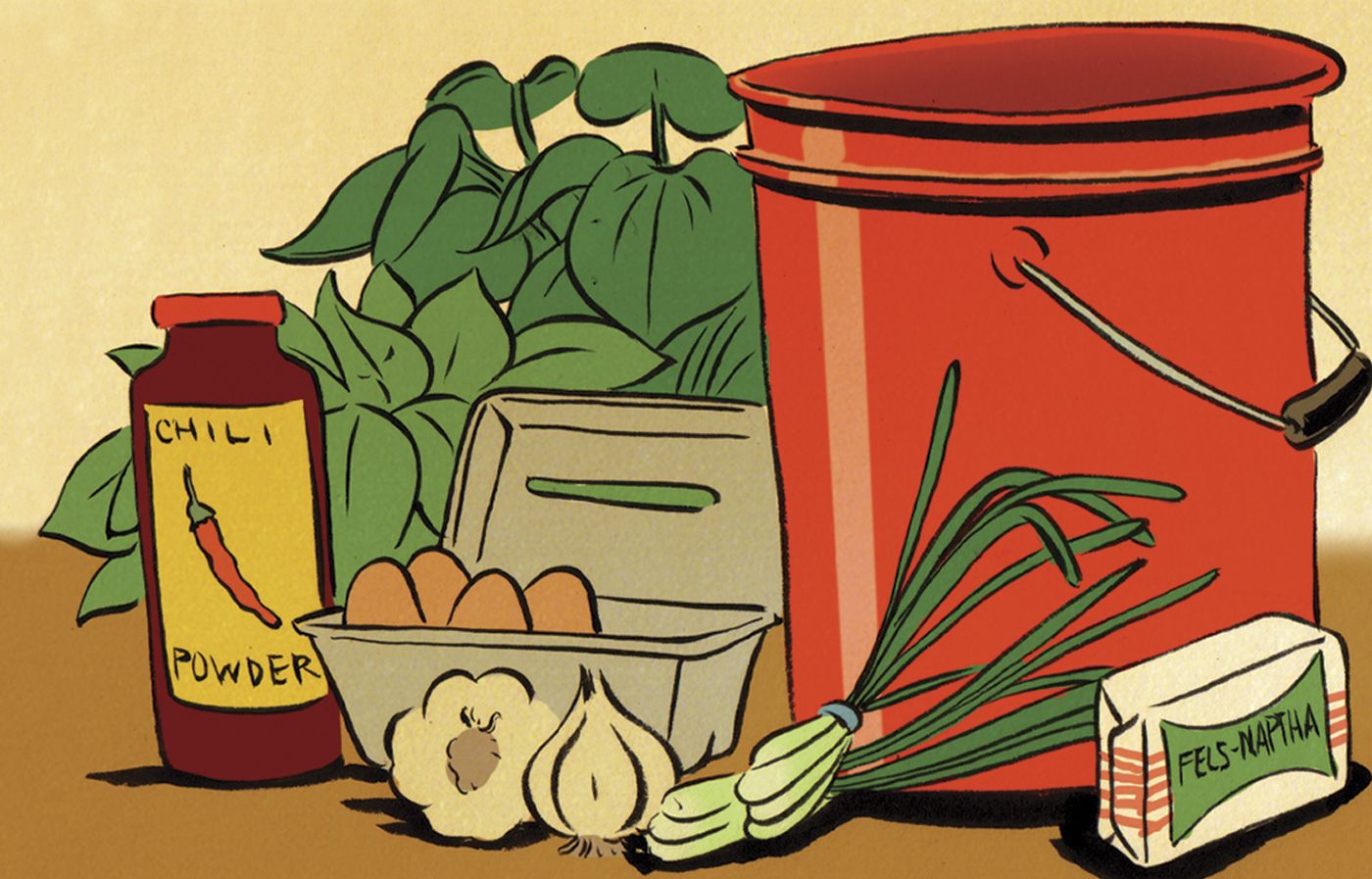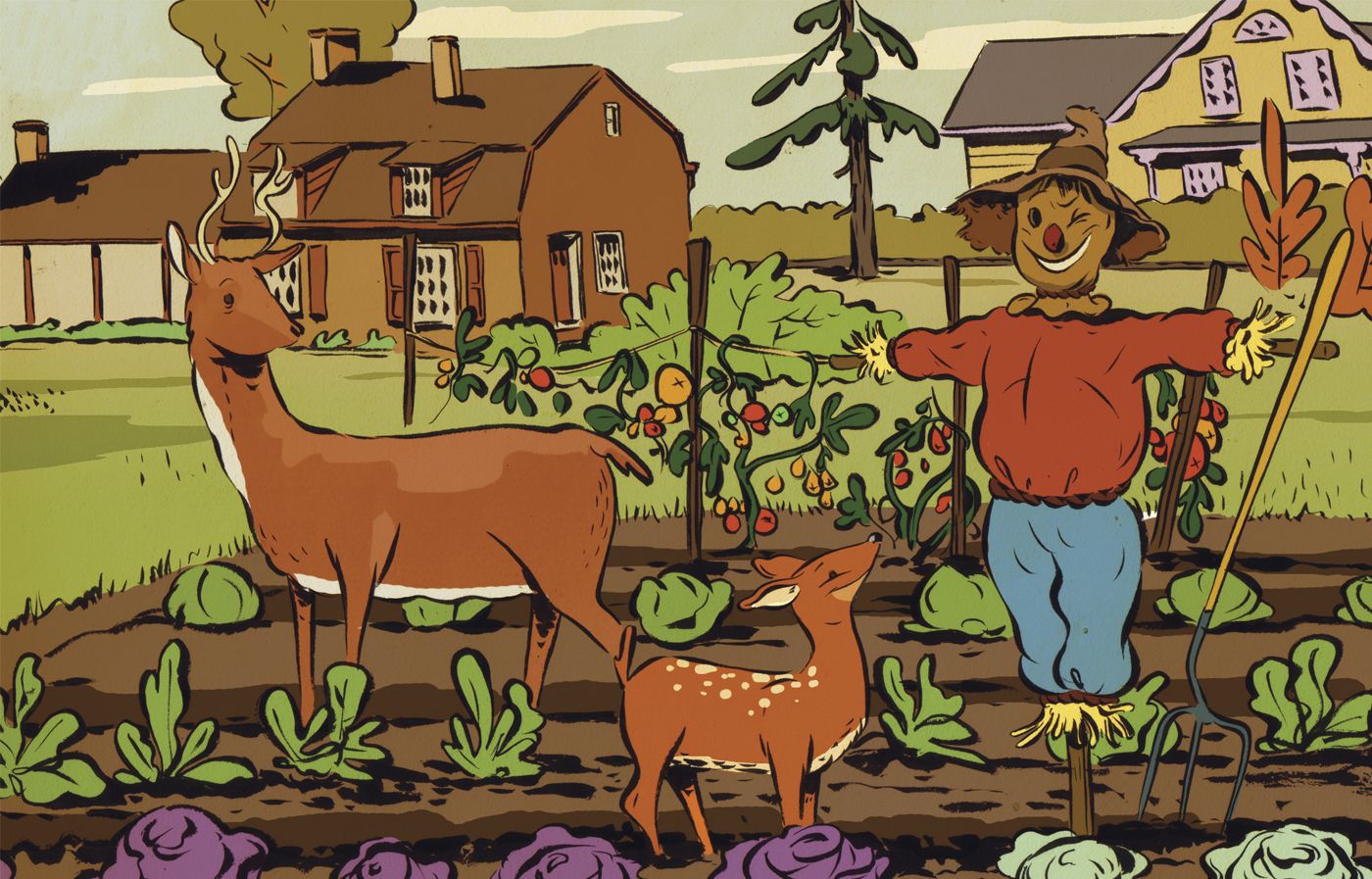Handsome as they are, deer really don’t belong around your house. Besides destroying expensive plantings, deer carry ticks that spread Lyme disease and cause more than a half-million auto collisions each year.
Unfortunately, some of their favorite snacks are common landscape plants, including roses, tulips, hostas, many ornamental shrubs such as rhododendron and yew, to say nothing of leafy vegetable gardens.
In this guide, we’ll discuss ways to prevent deer from eating your landscaping and provide some tips for plants that other critters will avoid.
3 Strategies for Defending Against Deer
Deer are intelligent and highly adaptable creatures. When they get hungry enough, they’ll test the limits of just about any preventive measure. That’s why experts recommend an “integrated management plan”—that is, using a variety of techniques.
“You have to keep them guessing,” says This Old House landscape contractor Roger Cook. “Eventually, deer will get used to anything, so I always recommend rotating repellents and combining them with other tools like scare tactics and fencing.”
Here are a few common methods.
Adding Physical Barriers To Keep Deer Out
Among the most foolproof deterrents are physical barriers like fences. Deer are agile jumpers, so fences need to be high — typically about 8 feet. Black propylene deer fencing with a 2-inch net is virtually invisible in a wooded setting and relatively easy to install.
Of course, fencing your whole lot is not always feasible or desirable, and motivated pests will find any opening, such as the driveway. But a fence can effectively enclose a vegetable or cutting garden near the house. Burrowing animals like rabbits can dig under your fence, so you may want to bury your fence a foot or two below the surface.
Installing an Electric Fence
An electric fence can provide an extra layer of protection against persistent invaders. By delivering a mild shock, it serves as a strong deterrent for animals like deer and groundhogs. Make sure to follow safety guidelines and local regulations when installing such fences.
Netting and Cages
For individual plants or small garden areas, netting or wire cages can provide protection. These are particularly useful for vegetable gardens, where you can create removable covers to allow for easy plant maintenance and harvesting.
Using Sprays and Repellents To Deter Deer
Spritzing liquids with an offensive odor or taste is the least expensive way to repel deer, though it can also be the least effective. Any spray — commercial or homemade — needs to be reapplied frequently as plants grow or rain washes it away. And as Cook points out, seriously overpopulated deer herds won’t be dissuaded: “A deer that’s starving will eat anything, no matter what you spray on it.”
Commercial Repellent Products
Commercial products like Deer-Off (made with eggs, hot peppers, and garlic) or Plantskydd (a blood-meal solution) are sprayed directly on plants to render them unpalatable. Other products contain predator scents like coyote urine that can be deposited strategically around the yard.
DIY Homemade Repellent Recipes
Some gardeners swear by odiferous homebrews made from ingredients like rotten eggs, chili powder, and scented soaps.
When This Old House design director Amy Rosenfeld built a house in Ulster County, New York, she heard horror stories about deer ravaging local gardens. Then her neighbor Barbara Fornal, an herbalist, shared this recipe for “deer juice,” which Rosenfeld applies vigilantly. “It totally works,” she says. “When people come over, they’re always like, ‘How do you have hostas?’” (Hostas are foliage plants deer specifically love to eat.)
Ingredients
- 1 bar of Fels Naptha soap
- 2 bunches of scallions, roughly chopped
- 2 heads of garlic, cloves separated
- 4 eggs
- Chili powder, lots
Process
- Fill 1/2 of a 5-gallon bucket with hot water.
- Shave soap into bucket to dissolve.
- Place scallions, garlic, eggs, and chili powder in a large piece of doubled cheesecloth. Tie the ends of the cloth tightly. Crack the eggs with a wooden spoon. Place the pouch in a bucket.
- Fill the bucket with more water, cover tightly with the lid, and place in a shaded area. Let it sit for one week.
- Transfer in batches to a pump sprayer. Apply after each rainfall or every 2 weeks.

Essential Oils and Herbal Infusions
Homemade repellents don’t always need to be as pungent or labor-intensive as the “Deer Juice” recipe. Many animals are deterred by the scents of certain essential oils, such as eucalyptus, peppermint, or clove. Dilute a few drops of these oils in water and spray them around your garden to keep pests away. Alternatively, steeping strong herbs like rosemary or thyme in boiling water can create an effective infusion spray.
Scare Tactics
Often deer can be kept at bay with scare tactics, usually a surprise burst of water or a loud noise. Placement is everything with such products, and hungry deer may eventually learn to ignore them. Some homeowners find that a vigilant dog is the best scare tactic, since canine predators like coyotes and wolves are deer’s natural enemies.
Choosing Deer-Resistant Plants

The best defense is a good offense: landscaping around your home with plants that are not to deer’s liking. “Many plants have their own repellent built in,” Jensen says. Deer will usually turn away from highly aromatic or poisonous plants (such as foxglove), and those with fuzzy leaves.
“If you have a deer problem, always try to plant from deerresistant lists,” says This Old House’s Roger Cook. “At least it gives you a fighting chance.”
Some deer-resistant options include:
- Lavender (Lavandula)
- Catmint (Nepeta faassenii)
- Bleeding heart (Dicentra spectabilis)
- Daffodil (Narcissus sp.)
- Boxwood (Buxus)
Rabbit-Resistant Plants
Rabbits are less likely to eat plants with strong scents or tough, leathery leaves. Consider planting:
- Marigolds
- Sage
- Oregano
- Meadow Rue
- Lamb’s ear
Groundhog-Resistant Plants
Plants that deter groundhogs typically have strong fragrances or sharp textures. Good choices within this category include:
- Snapdragons
- Ageratum
- Yarrow
- Lavender
- Coreopsis
Squirrel-Resistant Plants
Squirrels dislike several plants due to their strong odors or textures. These can be good choices for safeguarding your garden:
- Daffodils
- Hyacinths
- Alliums
- Geraniums
- Peppermint
Our Conclusion
Protecting your garden from plant-eating animals requires a multi-faceted approach. By combining physical barriers, repellents, scare tactics, and smart plant selection, you can significantly reduce damage to your garden. Remember that persistence and variety are key. Rotate your methods to prevent animals from becoming accustomed to any single deterrent.

